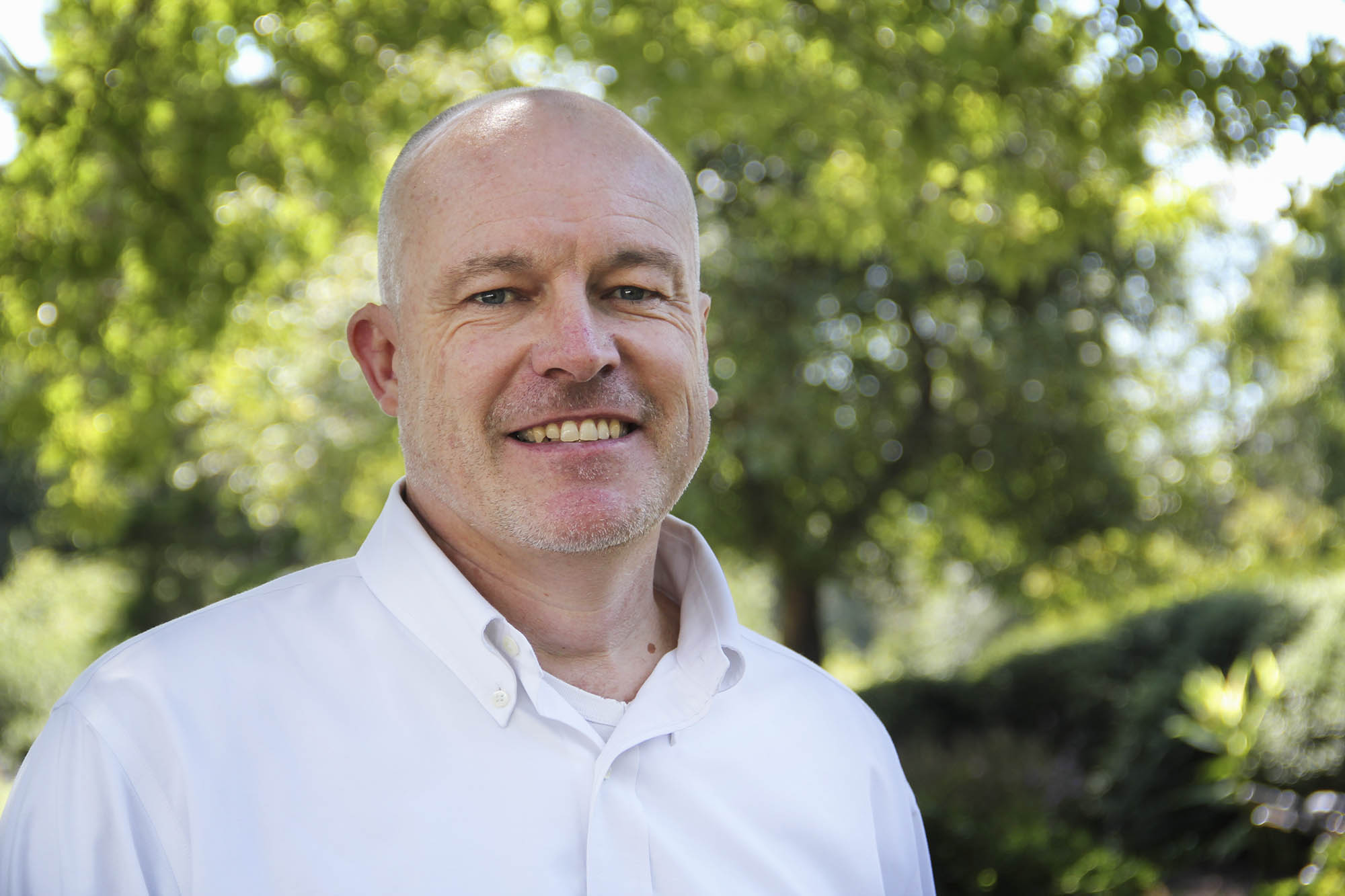The summer heat is always a challenge, but this year the coronavirus pandemic has added a whole new wrinkle.
In some cases, athletes – ones of all ages and abilities – are returning to vigorous activities following long stretches of inactivity stemming from the quarantine.
UVA Today turned to Arthur Weltman and Jason Allen, kinesiology professors in the University of Virginia’s Curry School of Education and Human Development, for some advice on how to safely resume exercise. They emailed us their thoughts.
Q. Does the fact that a lot of people are now returning to outdoor exercise routines during the hottest months of the year compound the risk of something bad happening?
Allen: Absolutely. “Exercise outside of the home” was designated as an essential activity in most areas during these “shelter in place” orders. However, they didn’t specifically state, “During the hottest months of the year!”

Exercise in the heat produces additional physiological challenges to the body. If an individual is unaccustomed to exercising and/or unaccustomed to the heat, this can increase the risk of an adverse event.
Q. What are some symptoms of heat exhaustion?
Weltman: They include: muscle cramping; fatigue; headache; nausea or vomiting; dizziness or fainting. Heat exhaustion can progress to heat stroke, whose symptoms include: a core temperature above 103 degrees; red, hot, dry skin (no sweating); rapid, strong pulse; dizziness; nausea; confusion; and loss of consciousness. It is critical to cool the body by whatever means possible if heat exhaustion or heat stroke occur. If left untreated, you essentially turn your body into an oven and allow your organs to “cook.” The most common cause of exertional heat-related death is organ failure.
Q. For people just starting to resume vigorous exercise routines that they had taken a break from during the pandemic, are there any kinds of preventive measures they can take?
Allen: In practical terms, we use the American College of Sports Medicine Guidelines to advise adults based on: A, if they are already participating in regular exercise (30 minutes for at least three days per week for the last three months); B, if they have known cardiovascular and metabolic or renal disease; and C, if they exhibit any signs and symptoms suggestive of cardiovascular and metabolic or renal disease

Kinesiology professor Jason Allen teaches human physiology, human circulatory physiology and clinical exercise physiology at UVA. (Contributed photo)
The recommendation for people with no known disease and no signs and symptoms is that medical clearance is not necessary to initiate or continue light- to moderate-intensity exercise and that they can progress gradually to more vigorous activities.
Those with known disease, but without any signs and symptoms who are already regular exercisers, should continue moderate intensity activities, but get medical clearance prior to engaging in vigorous level activity (above 75% heart rate max). These people who are not regular exercisers currently are recommended to get medical clearance prior to engaging in moderate-level activity.
For anyone with signs or symptoms, regardless of disease status, they should stop exercising (or don’t start) until they undergo a medical evaluation.
Q. What are some specific guidelines that athletes and sport teams can put in place to lower the risk of heat-related illness during exercise?
Weltman:
- Ten to 14 days of gradually increasing duration and intensity of exercise in the heat to allow for acclimatization.
- Monitor hydration status daily to minimize the risk of dehydration.
- Consume about eight ounces of a rapidly digestible fluid (e.g. water, Gatorade) every 15 to 20 minutes during exercise in the heat and restore fluid after exercise in the heat.
- Modify exercise based on environmental conditions: cancel exercise on days when environmental conditions are dangerous; increase rest/fluid breaks when exercising in the heat; schedule workouts to an earlier or later (i.e. cooler) time of day; allow for removal of unnecessary equipment or clothing to facilitate evaporation of sweat.
Q. Are there any precautions that parents should take with their kids who are returning to sports, either this summer or in the fall?
Weltman: These common sense tips are from the CDC: Keep kids at home if they are sick or symptomatic; don’t share equipment if it can be avoided; try and keep 6 feet between players whenever possible; Coaches, parents and other spectators should wear a face covering, and if possible, players should wear face coverings as well. Players should clean their hands frequently.

UVA kinesiologist Arthur Weltman emphasizes caution for those embarking upon pandemic-inspired exercise plans during this steamy summer. (Photo by Dan Addison, University Communications)
Be aware of the risk. Lowest risk – individual skill-building drills and/or exercise at home and/or with immediate family; increasing risk – team-based practice; more risk – within-team competition; even more risk – full competition between teams from the same local area; highest risk – full competition between teams from different geographic areas.
While some feel that children are less likely to become infected and/or transmit COVID-19, and will be asymptomatic or have mild symptoms if they become infected, a recent study suggested the following: children under the age of 10 have relatively low risk of contracting and transmitting COVID-19 (although the risk was not zero), while children between the ages of 10 and 18 have a similar risk as adults of contracting and transmitting COVID-19. While for the most part these older children may be asymptomatic or only exhibit mild symptoms, if they contract the virus during practice or athletic competition there is still a risk of them coming home and transmitting the virus to vulnerable members of their households. Unlike professional and some college sports, where frequent testing and a “bubble” are in place, these precautions are not available for high school or youth sports, and many localities are in the process of making decisions about how and when to allow children to return to organized sport.
Q. So much of the talk about athletes returning to sports has centered on coronavirus protective measures (and for good reason). But do you think an overlooked aspect of everything has been that athletes may have a higher risk of injury – say a torn knee ligament or a ruptured Achilles’ tendon – due to long layoffs?
Weltman: We have good evidence that transition periods are associated with an increased risk of catastrophic sport injuries. Examples of transition periods include, and are not limited to, the following: One, athletes new to the program (e.g. high school athletes transitioning to an intercollegiate program and the associated differences in practice duration and intensity); two, athletes returning after an injury or illness; and three, resumption of training after an academic break (e.g. winter, spring, summer breaks).
Some of the factors that place athletes at increased risk during these transition periods may be exacerbated as a result of suspension of organized team activities and social distancing due to COVID-19. Many institutions and organizations are making plans to return to organized sports, affecting more than 10 million high school and college athletes. As athletes re-engage in their sport during this unprecedented pandemic, health care providers, administrators and coaches must develop a comprehensive plan to reduce risk while reintroducing sport.
Media Contact
Article Information
July 27, 2020
/content/how-safely-resume-exercise-summer-heat-amid-global-pandemic

